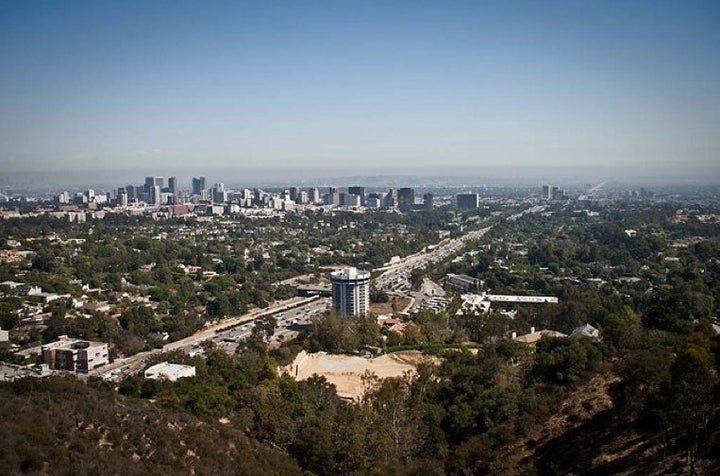
As communications manager of the J. Paul Getty Trust in 1997, I wrote the following for the Trust's newsletter just before the opening of the Getty Center. With "carmageddon" upon us, I thought it was again relevant.
A Vital Link
See all those drivers buzzing below the Getty Center on the 405? They are literally following the footsteps of their predecessors: Native Americans, Spanish explorers, mission padres, and early California settlers. The break in the Santa Monica Mountains, now known as the Sepulveda Pass, has been well traveled for eight generations. And often, a driver might feel as a stage rider did in 1867 when she said she and her companions traveled at the "peril of our lives."
The trail was blazed by Native Americans who wore a dirt path to the ocean in search of food. Their quiet existence changed, however, in 1769, when Gaspar de Portola, governor of Baja, arrived with 64 men to convert "heathen people submerged in... paganism." Thereafter, the native peoples virtually vanished with the onslaught of new settlers from Europe and Mexico.
By 1790, retired soldiers from nearby presidios had discovered the San Fernando Valley as a place to settle. One of them, Don Francisco Sepulveda, was honored for his exemplary service with a prime piece of real estate -- the San Vicente y Santa Monica Rancho, which included the mountain pass. From then on, both the canyon and the trail were called Sepulveda.
The padres who established the San Fernando Mission in 1797 introduced pistachios, dogwood, plums, figs, citrus, and grapes to the valley. Before long, hides, tallow, grains, and wines from the mission and neighboring rancheros were headed down the Sepulveda Trail in log-wheeled carts to the port in San Pedro. In 1870, ranchers James Boon Lankershim and Isaac Newton Van Nuys developed the trail into a more substantial wagon road to "shorten" their haul" to the port.
The settlements connected by the pass were officially joined in 1915, when the valley was annexed to Los Angeles. (Today some valley communities think that was not such a great idea.)
The road was on its way to becoming a modern boulevard in 1922, when neighboring chambers of commerce began to plan "a more substantial highway." Seven years later, the section between Ventura and Wilshire boulevards was complete, retracing the old Sepulveda Trail. One observer remarked that "great man-directed machines had left permanent scars on friendly hillsides." (Some things don't change with time.)
In 1957, the state began building the 405 freeway. The section between Casiano Road (now Mountaingate/Bel-Air Crest) and Ohio Avenue was developed first, with others following, and in 1958, the 405 was declared an interstate highway.
Today, as the Getty Center prepares to open, drawing visitors from all over the world, think of the words of G. W. Bunton of the Van Nuys Chamber of Commerce, spoken in 1922. Regarding the development of the highway, he said, "All the territory adjoining the road will be benefitted, as everybody is planning to come to California, or heaven; and will come here first if possible."